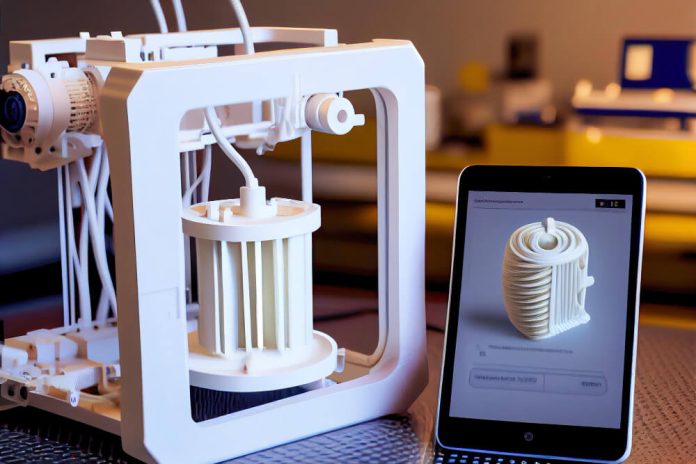The advent of 3D printing has brought a wave of innovation across various industries, and healthcare is no exception. This transformative technology has paved the way for groundbreaking advancements in personalized medical devices, including custom prosthetics and even bioprinted organs.
From enhancing the quality of life for patients with tailored prosthetics to offering the potential of creating fully functional organs, 3D printing is changing the way we approach healthcare.
Understanding 3D Printing in Healthcare
3D printing, also known as additive manufacturing, involves creating three-dimensional objects from digital models. The process works by layering materials, such as plastics, metals, and biocompatible substances, to build up a physical object.
In healthcare, 3D printing has proven particularly useful in creating customized medical solutions for patients, offering unparalleled precision and personalization.
This technology enables the production of highly specific medical devices, from prosthetic limbs to implants, crafted to meet the exact needs of individual patients. As a result, 3D printing in healthcare is revolutionizing the treatment of many conditions, providing more effective, personalized care while reducing costs and recovery times.
Custom Prosthetics: Personalized Solutions for Patients
One of the most significant applications of 3D printing in healthcare is the creation of custom prosthetics. Traditional prosthetics are often made from generic molds, resulting in discomfort or lack of functionality for the user. With 3D printing, however, prosthetics can be tailored to a patient’s unique body shape, size, and preferences.
3D-printed prosthetics offer comfort, durability, and lighter weight compared to traditional options. Customizable designs allow for better fit, natural appearance, and advanced functionality like robotic limbs controlled by neural interfaces. Patients can also have their prosthetics designed with their aesthetic preferences, enhancing psychological comfort and overall well-being.
The process of 3D printing prosthetics is also faster and more cost effective than traditional methods, making these devices more accessible for patients worldwide, especially in underserved regions. As technology continues to evolve, 3D-printed prosthetics are becoming more advanced, offering solutions for amputees that were once thought impossible.
The Rise of Bioprinting: Printing Organs for Transplantation
Perhaps the most exciting and transformative potential of 3D printing in healthcare is the development of bioprinting, where living cells are used to print organs and tissues. Bioprinting involves the precise layering of bioinks — which contain living cells — to create structures that mimic human organs or tissues.
Bioprinting, despite being in its early stages, holds the potential to address the global organ transplant shortage by creating fully functional, bioengineered organs like skin, liver, and cartilage, offering an alternative to lengthy waiting lists and the risk of organ rejection in the healthcare system.
The potential applications for bioprinted organs are vast. In the future, doctors might be able to 3D print a replacement organ tailored to a patient’s specific needs and genetic profile, reducing the risks associated with organ transplants.
Moreover, bioprinted tissues could also be used for drug testing, providing a more accurate model for testing pharmaceutical products and reducing the need for animal trials.
The Technology Behind Bioprinting Organs
Bioprinting is a 3D printing technique that uses living cells and biomaterials instead of standard materials like plastic. These cells are often sourced from the patient’s body to minimize rejection risk. The printer layers these cells, creating functional tissues and organs.
The challenge with bioprinting organs lies in creating complex structures that mimic the intricate architecture of real human organs.
For example, a liver is made up of multiple types of cells, each with a specific function. Creating a bioprinted liver that functions like a real one requires the precise organization of different cell types and vascular networks to allow for proper nutrient and oxygen flow.
Personalized Medical Devices: The Future of Healthcare Innovation
In addition to prosthetics and bioprinting, 3D printing in healthcare is being used to create a wide range of personalized medical devices. These devices are custom-designed to meet the specific needs of individual patients, offering better functionality, comfort, and performance. Some examples include:
- Custom implants: 3D printing can be used to create implants tailored to the shape of a patient’s body, improving fit and reducing the likelihood of complications.
- Surgical guides: 3D-printed surgical guides help surgeons navigate complex procedures by providing accurate, patient-specific blueprints for surgery.
- Orthopedic devices: Customized orthopedic devices, such as braces or supports, can be 3D printed to fit the precise contours of the patient’s body, improving comfort and effectiveness.
The Challenges and Ethical Considerations
While the potential of 3D printing in healthcare is immense, it is not without challenges. One of the main obstacles to the widespread adoption of bioprinting is the need for greater research and development. Printing complex, functional organs requires advanced technology and techniques that are still in the experimental stage.
Ethical considerations also come into play. The use of living cells in bioprinting raises questions about the sourcing of these cells and the implications of printing organs. Furthermore, the idea of printing human organs for transplantation introduces ethical dilemmas regarding fairness, access, and the implications of creating living tissues artificially.
The Future of 3D Printing in Healthcare
3D printing in healthcare is expected to revolutionize transplant organs and make custom prosthetics more affordable, enhancing patient outcomes. Despite challenges, advancements in bioprinting could make this technology a reality in the coming decades.
As the technology matures, we are likely to see even more innovative applications of 3D printing in healthcare, including customized drug delivery systems, tissue engineering, and regenerative medicine. In the coming years, 3D printing will likely become a standard tool in healthcare, offering personalized, efficient, and cost-effective solutions for patients worldwide.
Conclusion
3D printing in healthcare is ushering in an era of medical innovation that promises to change the way we approach patient care. From custom prosthetics to bioprinted organs, the possibilities are vast. As the technology continues to advance, we can expect even more breakthroughs that will improve the quality of life for patients, reduce healthcare costs, and provide more personalized care. The future of healthcare is rapidly evolving, and 3D printing is leading the charge toward more innovative, effective solutions.
I hope you find the above content helpful. For more such informative content, please visit Medtechreporter.











